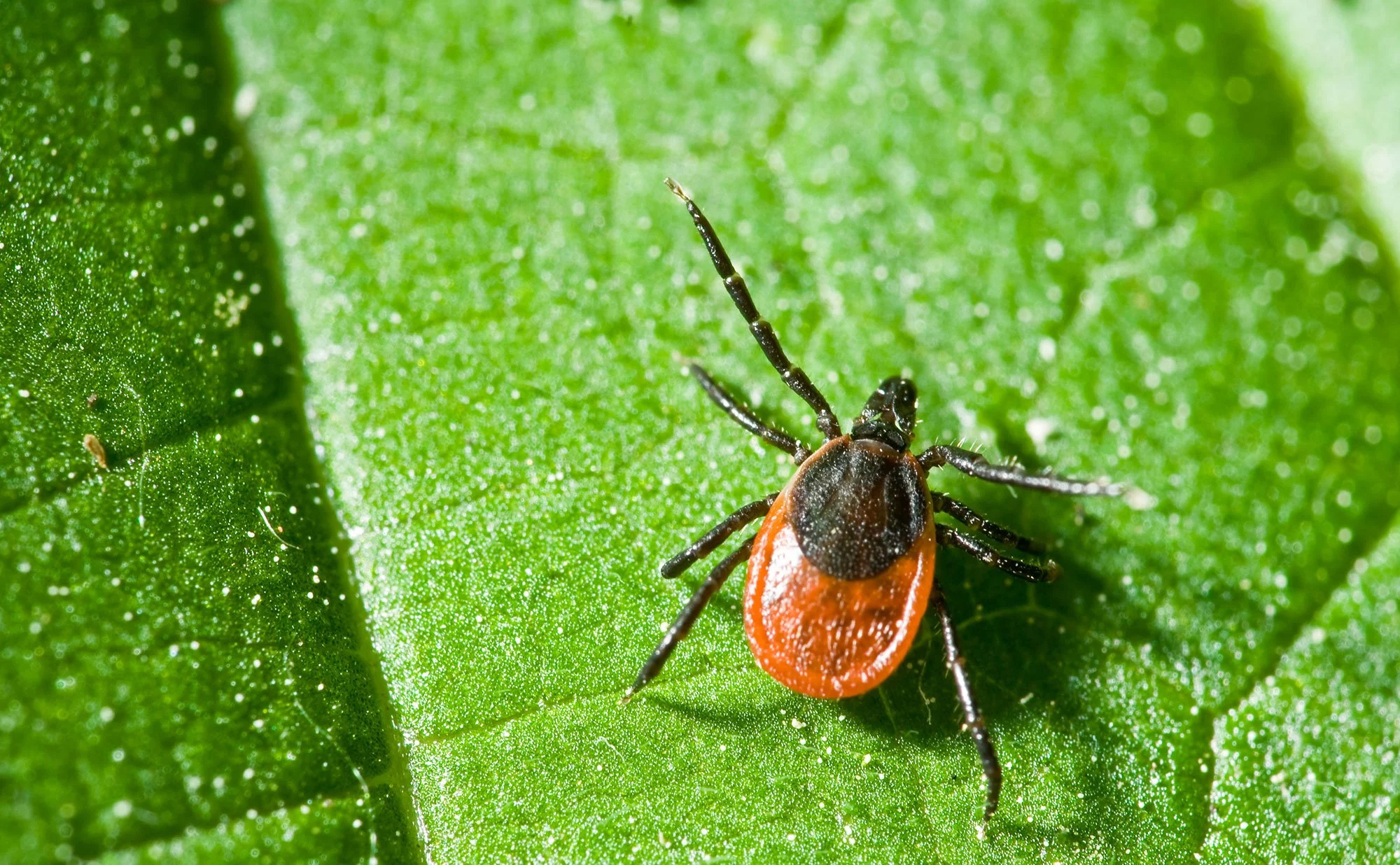Ticks

Ticks are blood-feeding parasites that are often found in tall grasses.
When brushed by a moving animal or person, they quickly let go of the vegetation and climb onto the host. Ticks can only crawl; they cannot fly or jump. A tick will attach itself to its host by inserting its cutting mandibles and feeding tube into the skin. The feeding tube is covered with re-curved teeth and serves as a hammer to puncture skin.
Changes in temperature and day length are some of the factors signalling a tick to seek a host. Ticks can detect heat emitted or carbon dioxide respired from a nearby host.
They will generally drop off the animal when full, but this may take several days. In some cases ticks will live for some time on the blood of an animal. Ticks are more active outdoors in warm weather, but can attack a host at any time.
Protection From Ticks
- Wear protective clothing like long-sleeved shirts, long pants, sturdy shoes and a hat. Tuck pant cuffs in socks & tape the area where pants and socks meet so ticks cannot crawl under clothing. Wear light-colored clothing so ticks are easier to detect.
- Walk in the center of trails so weeds do not brush against you.
- Most ticks rarely transmit disease until they are attached four or more hours. If you're outdoors, check yourself and your pets every 2-3 hours.
- Apply insect repellent containing 10% to 30% DEET, primarily to clothes. Apply sparingly to exposed skin.
- If ticks are crawling on the outside of clothes, they can be removed with masking tape or cellophane tape.
- The best way to remove a tick is to grasp it firmly with tweezers and firmly pull it straight out. Do not twist or jerk the tick. If tweezers are not available, grasp the tick with a piece of tissue or cloth as a barrier between your fingers and the tick.
- Wash the bite area and your hands thoroughly with soap and water and apply an antiseptic to the bite.
- Make your yard less inviting to ticks by keeping grass mowed and weeds trimmed. Remove rodent attractants like spilled birdseed and clutter such as wood piles. If ticks are found in vegetation along property edges, use insecticides labeled for tick control in those areas.
- Confine pets to the home or yard, since free-roaming dogs and cats are much more likely to encounter ticks.
